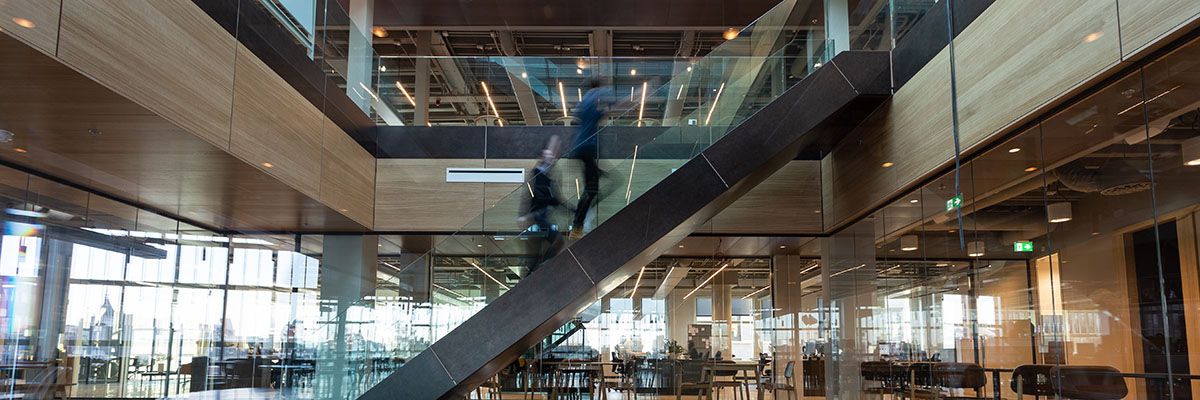
Air quality analysis and performance testing
Providing clean air, simple as it sounds, is one of the key aspects of facilities management and air quality analysis and performance testing are a vital part of delivering it. It’s reflected in the pursuit of improved Indoor Air Quality (IAQ), a subject around which there’s been both increased awareness and widespread legislative action in recent years. There are good reasons. Poor IAQ has measurable effects, all of which are negative including:
- Lower staff productivity
- Lower morale
- Negative publicity
- Increased rates of absenteeism
- Higher building maintenance costs
- Potential litigation
This being the case, it’s worth exploring the subject in more detail.
Clean air – an overview
“Clean” air is first and foremost a matter of Carbon Dioxide (CO2) levels. If the air contains high levels of CO2, then the air won’t be considered sufficiently clean. How does the CO2 level change in indoor environments?
CO2, of course, is naturally present in outdoor air with, typically, a concentration of around 400 parts per million. There are essentially two sources which can increase CO2 levels:
- Metabolic CO2 – which is produced and then expelled by breathing.
- Combustion – which is produced as a by-product of combustion, for example fuel, heating oil, natural gas and so on.
Indoors (in a facility), the comfort level for CO2 is generally taken to be somewhere below 1100 to 1500 parts per million. That’s the level at which staff or tenants in a building can be expected to have no complaints about air quality. At the other extreme, 3500-5000 parts per million is generally the point at which negative effects on health become noticeable.
In the USA, OSHA currently sets 5000 parts per million as the Permissible Exposure Level (PEL). Meanwhile, the American Society of Heating, Refrigeration, and Air Conditioning Engineers (ASHRAE) recommends CO2 levels are maintained below 1000 PPM.
At the upper extreme, the concentration of CO2 in indoor spaces can rise to levels where cognitive function is impaired.[1]
Why monitor air quality in facilities?
The threat of impaired function is, of course, why facilities managers should monitor CO2 levels and, by extension, air quality. Bearing in mind that workers, students, and others spend roughly half their working hours in a facility of one kind or another, it’s important they do so. In fact, today, particularly given the environmentally conscious trends that are becoming more and more prevalent, air quality monitoring is fast coming to be seen as an essential function for building engineers. The monitoring process is part of ensuring good air quality.
The key ingredient in the mix is outside air, which can be used to dilute indoor air pollutants and thereby remove (or exhaust) contaminants including odors from inside the facility. But the first step in the process is measuring carbon dioxide levels.
Measuring CO2
Almost all HVAC systems function by re-circulating significant amounts of indoor air with the aim of maintaining a comfortable environment while limiting the energy costs that result from heating or cooling (to the degree required) outside air. When, as an occupant, you feel air coming out of a ventilation duct, the likelihood is that some of it will be drawn from outside and some re-circulated from inside the building. You won’t know the balance, but it will affect CO2 levels.
Particularly in a high occupancy building, the balance is important because occupancy is a major contributor to these levels. People are a major source of excess carbon dioxide. An average adult’s breath contains up to 50,000 PPM of CO2, a hundred times higher than the level found in outdoor air. So, without sufficient ventilation, levels can quickly increase. There are other examples; in high traffic zones, for instance, the effect is similar. Generally, in indoor spaces CO2 concentration is the result of five main factors:
- Occupancy rates – the number of people in the indoor space and the space volume.
- The activity taking place.
- Duration of time spent by users in the indoor space.
- Combustion processes.
- Air exchange and outer air volume flow.
It’s worth noting that different types of facilities will face different standards and challenges. Schools, for instance, generally aren’t exposed to the same levels of latent CO2 as industrial facilities. On the other hand, gyms and leisure centers can easily suffer from excess CO2.
In each case, however, what’s important here is ventilation. Occupied buildings with low ventilation rates will result in CO2 levels increasing throughout the day while facilities with effective ventilation will experience the opposite.
Measuring CO2 alone may not provide a definitive answer to determining the best ventilation strategy, however it will point towards the likely effectiveness of the ventilation system.
The NexRev advantage
At NexRev, we’ve been unlocking the power in facility and energy management data with over half a million connected devices across North America. Our team of experts is focused on helping you deliver more with your budgets, infrastructure, and assets to create sustainable savings in operations and energy, reducing your risk and increasing operational confidence.
In terms of CO2, NexRev’s Freedom solution allows users to control their HVAC and DCV equipment, thereby mitigating the potential negative impact of elevated CO2 levels. Freedom allows set modes to be implemented either manually or automatically according to the conditions determined by the monitoring process.
To discuss your options and the best way forward, please email us at
[1] https://www.deq.nc.gov/environmental-assistance-and-customer-service/ias-energy-efficiency/opportunities/ventilation-and-indoor-air-quality/download#:~:text=OSHA%20currently%20sets%205%2C000%20parts,be%20maintained%20below%201%2C000%20ppm.